Minamoto on:
[Wikipedia]
[Google]
[Amazon]
was a noble surname bestowed by the Emperors of Japan upon members of the
 The most prominent of the several Minamoto families, the Seiwa Genji, descended from Minamoto no Tsunemoto (897–961), a grandson of Emperor Seiwa. Tsunemoto went to the provinces and became the founder of a major warrior dynasty. Minamoto no Mitsunaka (912–997) formed an alliance with the Fujiwara. Thereafter the Fujiwara frequently called upon the Minamoto to restore order in the capital, Heian-Kyō (modern Kyōto).Mitsunaka's eldest son, Minamoto no Yorimitsu (948–1021), became the protégé of Fujiwara no Michinaga; another son, Minamoto no Yorinobu (968–1048) suppressed the rebellion of Taira no Tadatsune in 1032. Yorinobu's son, Minamoto no Yoriyoshi (988–1075), and grandson, Minamoto no Yoshiie (1039–1106), pacified most of northeastern Japan between 1051 and 1087.
The most prominent of the several Minamoto families, the Seiwa Genji, descended from Minamoto no Tsunemoto (897–961), a grandson of Emperor Seiwa. Tsunemoto went to the provinces and became the founder of a major warrior dynasty. Minamoto no Mitsunaka (912–997) formed an alliance with the Fujiwara. Thereafter the Fujiwara frequently called upon the Minamoto to restore order in the capital, Heian-Kyō (modern Kyōto).Mitsunaka's eldest son, Minamoto no Yorimitsu (948–1021), became the protégé of Fujiwara no Michinaga; another son, Minamoto no Yorinobu (968–1048) suppressed the rebellion of Taira no Tadatsune in 1032. Yorinobu's son, Minamoto no Yoriyoshi (988–1075), and grandson, Minamoto no Yoshiie (1039–1106), pacified most of northeastern Japan between 1051 and 1087.
 The Seiwa Genji's fortunes declined in the Hōgen Rebellion (1156), when the Taira executed most of the line, including Minamoto no Tameyoshi. During the Heiji Disturbance (1160), the head of the Seiwa Genji, Minamoto no Yoshitomo, died in battle. Taira no Kiyomori seized power in Kyoto by forging an alliance with the retired emperors Go-Shirakawa and Toba and infiltrating the ''
The Seiwa Genji's fortunes declined in the Hōgen Rebellion (1156), when the Taira executed most of the line, including Minamoto no Tameyoshi. During the Heiji Disturbance (1160), the head of the Seiwa Genji, Minamoto no Yoshitomo, died in battle. Taira no Kiyomori seized power in Kyoto by forging an alliance with the retired emperors Go-Shirakawa and Toba and infiltrating the '' The later Ashikaga (founders of the Ashikaga shogunate of
The later Ashikaga (founders of the Ashikaga shogunate of 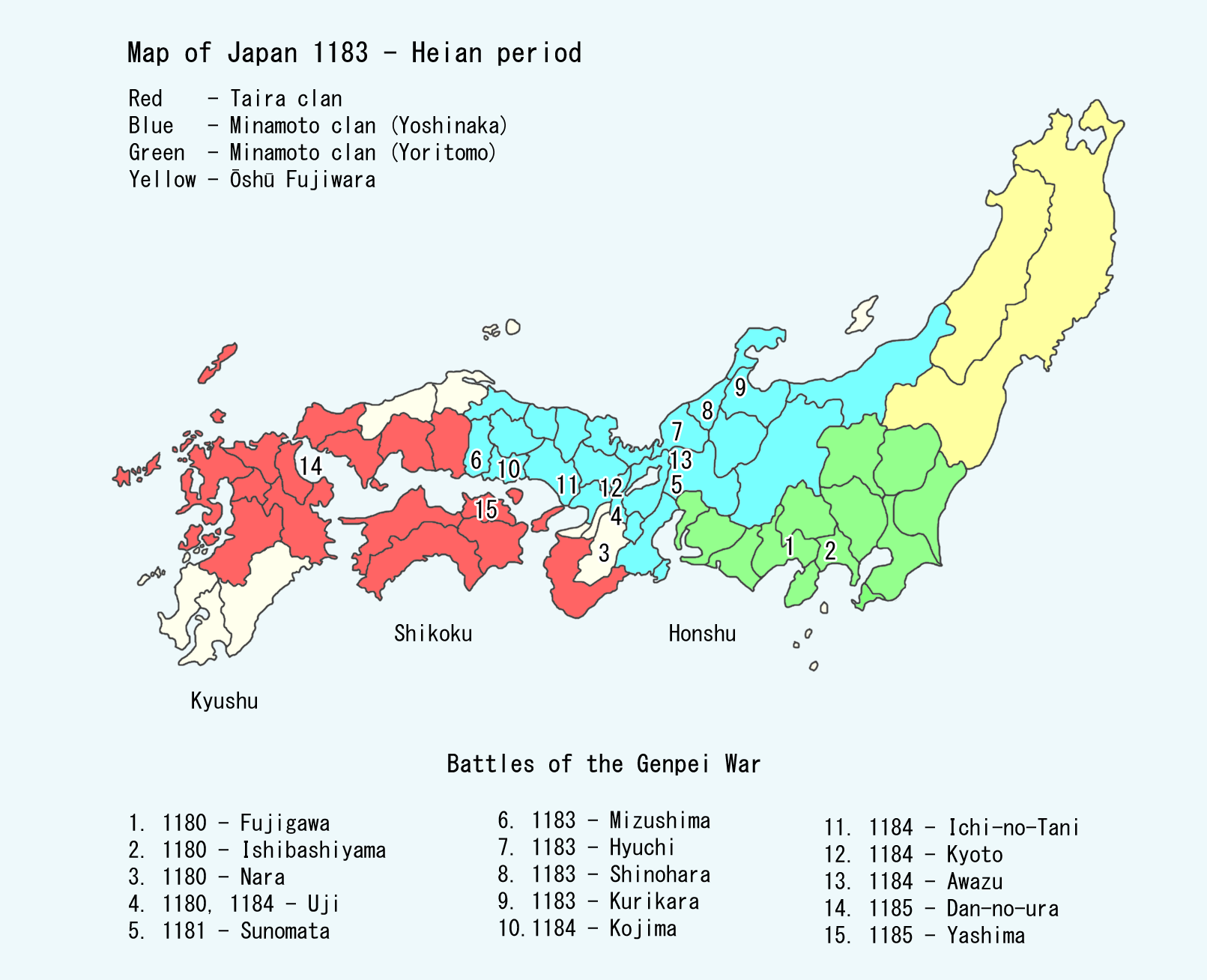 The
The
 Noted Saga Genji and descendants include:
* Minamoto no Makoto, seventh son of the Emperor
* Minamoto no Hiromu, eighth son of the Emperor
** Minamoto no Hitoshi, grandson of Hiromu
* Minamoto no Tokiwa, son of the Emperor
** Minamoto no Okoru, first son of Tokiwa
* Minamoto no Sadamu, son of the Emperor
** Minamoto no Shitagō, great-grandson of Sadamu
* Minamoto no Hiroshi, son of the Emperor
* Minamoto no Tōru, son of the Emperor
Noted Saga Genji and descendants include:
* Minamoto no Makoto, seventh son of the Emperor
* Minamoto no Hiromu, eighth son of the Emperor
** Minamoto no Hitoshi, grandson of Hiromu
* Minamoto no Tokiwa, son of the Emperor
** Minamoto no Okoru, first son of Tokiwa
* Minamoto no Sadamu, son of the Emperor
** Minamoto no Shitagō, great-grandson of Sadamu
* Minamoto no Hiroshi, son of the Emperor
* Minamoto no Tōru, son of the Emperor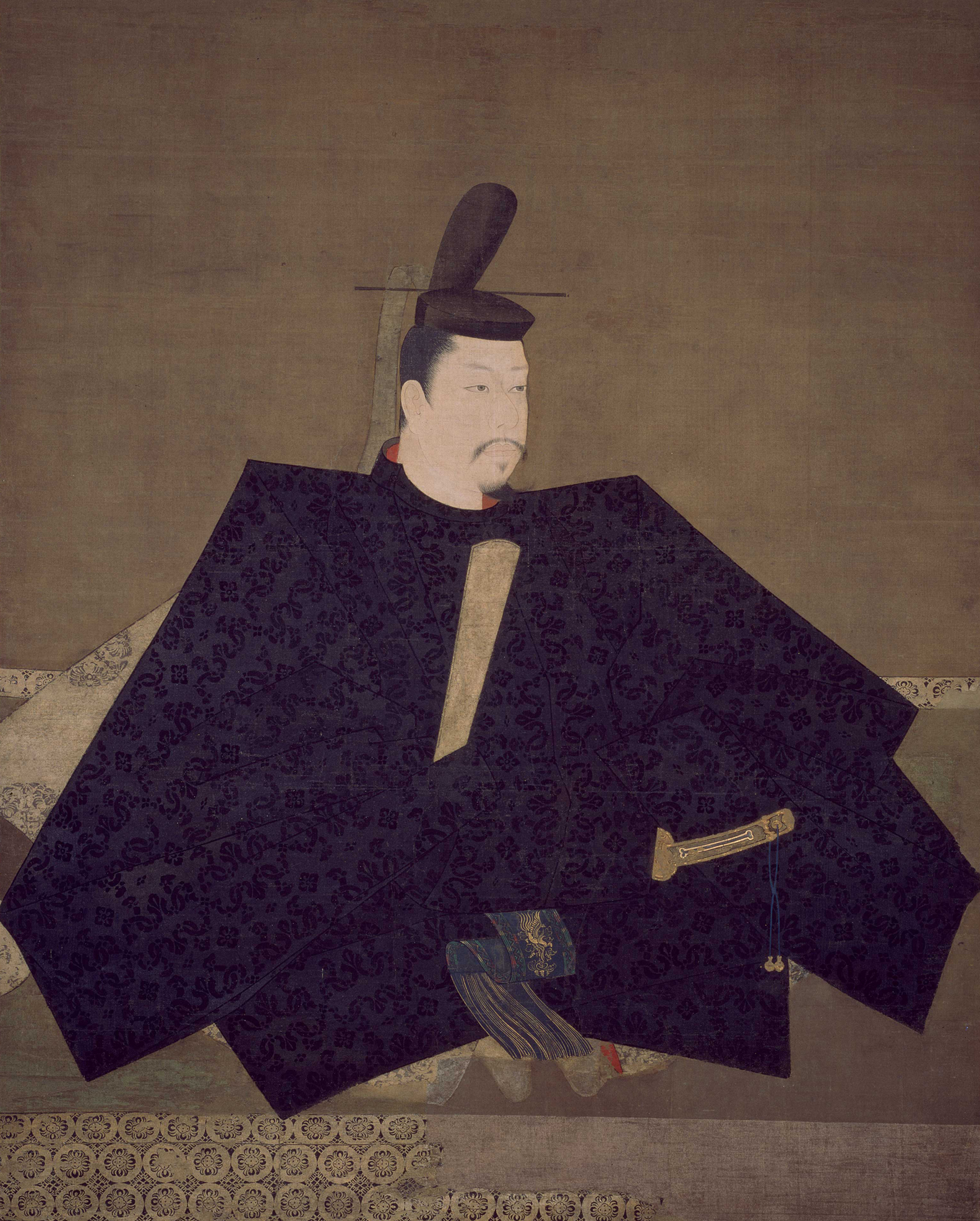 ** Minamoto no Anbō (secular name Minamoto no Shitagō), great-grandson of Tōru
** Watanabe no Tsuna (his official name was Minamoto no Tsuna, who resided at Watanabe in Settsu province, and took the name of the place), great-great-grandson of Tōru
*** Matsuura Hisashi, great-grandson of Tsuna
** Minamoto no Koreshige, grandson of Tōru
*** Minamoto no Mitsusue, great-great-grandson of Koreshige
* Minamoto no Tsutomu, son of the Emperor
* Minamoto no Hiraku, son of the Emperor
History records indicate that at least three of Emperor Saga's daughters were also made Minamoto ( Minamoto no Kiyohime, Minamoto no Sadahime, and Minamoto no Yoshihime), but few records concerning his daughters are known.
** Minamoto no Anbō (secular name Minamoto no Shitagō), great-grandson of Tōru
** Watanabe no Tsuna (his official name was Minamoto no Tsuna, who resided at Watanabe in Settsu province, and took the name of the place), great-great-grandson of Tōru
*** Matsuura Hisashi, great-grandson of Tsuna
** Minamoto no Koreshige, grandson of Tōru
*** Minamoto no Mitsusue, great-great-grandson of Koreshige
* Minamoto no Tsutomu, son of the Emperor
* Minamoto no Hiraku, son of the Emperor
History records indicate that at least three of Emperor Saga's daughters were also made Minamoto ( Minamoto no Kiyohime, Minamoto no Sadahime, and Minamoto no Yoshihime), but few records concerning his daughters are known.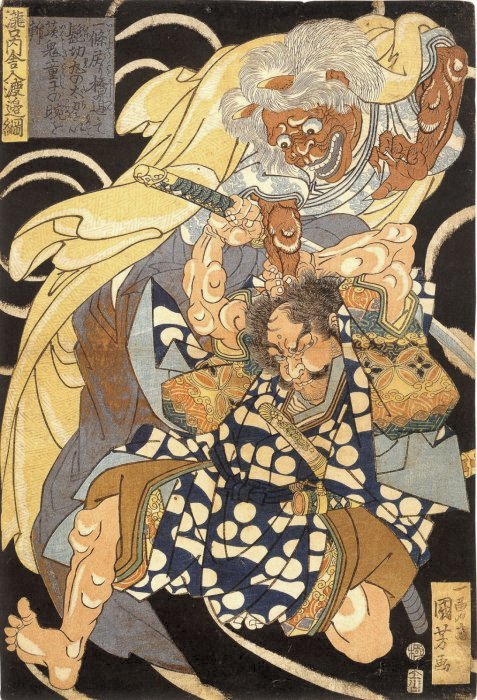
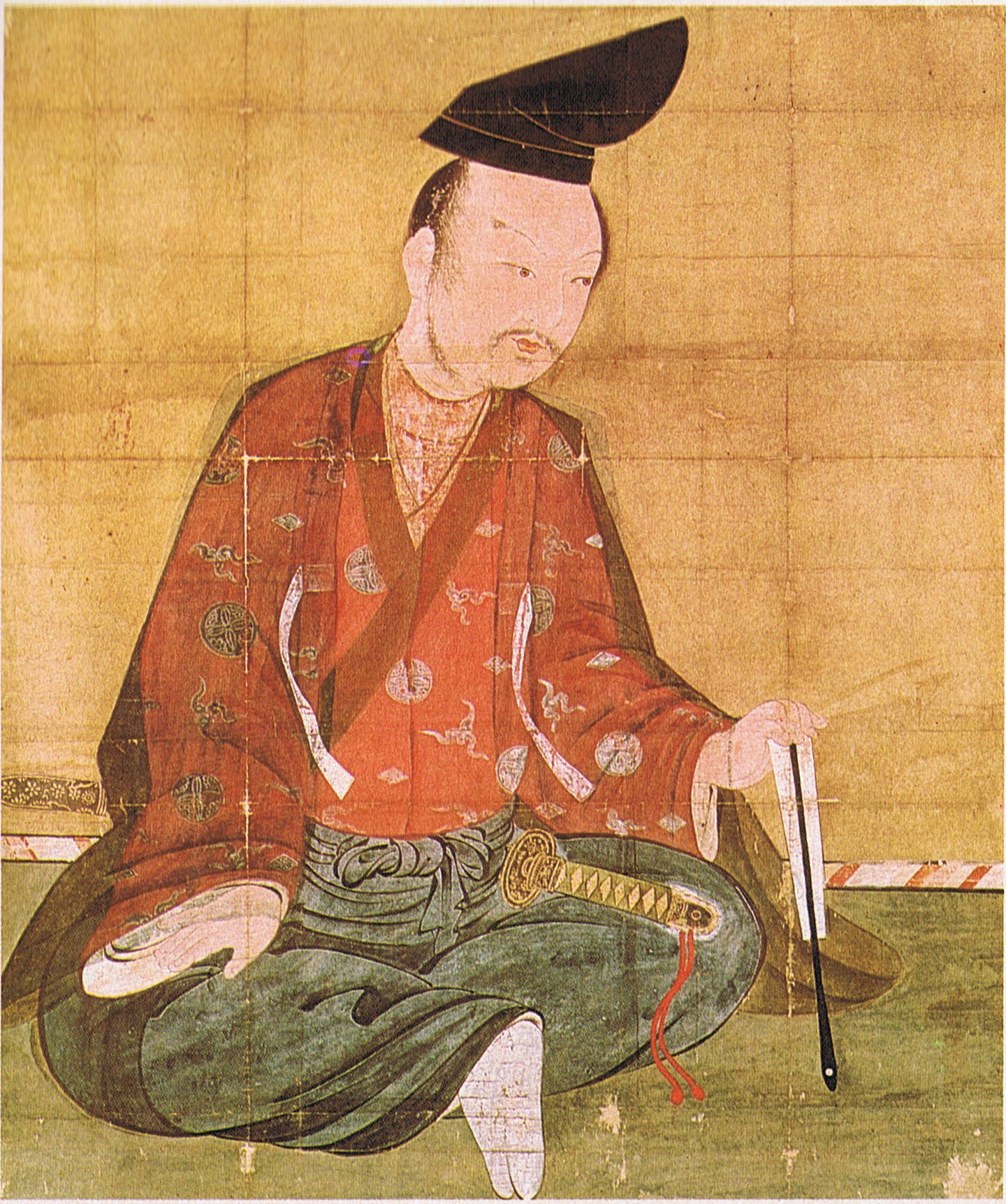
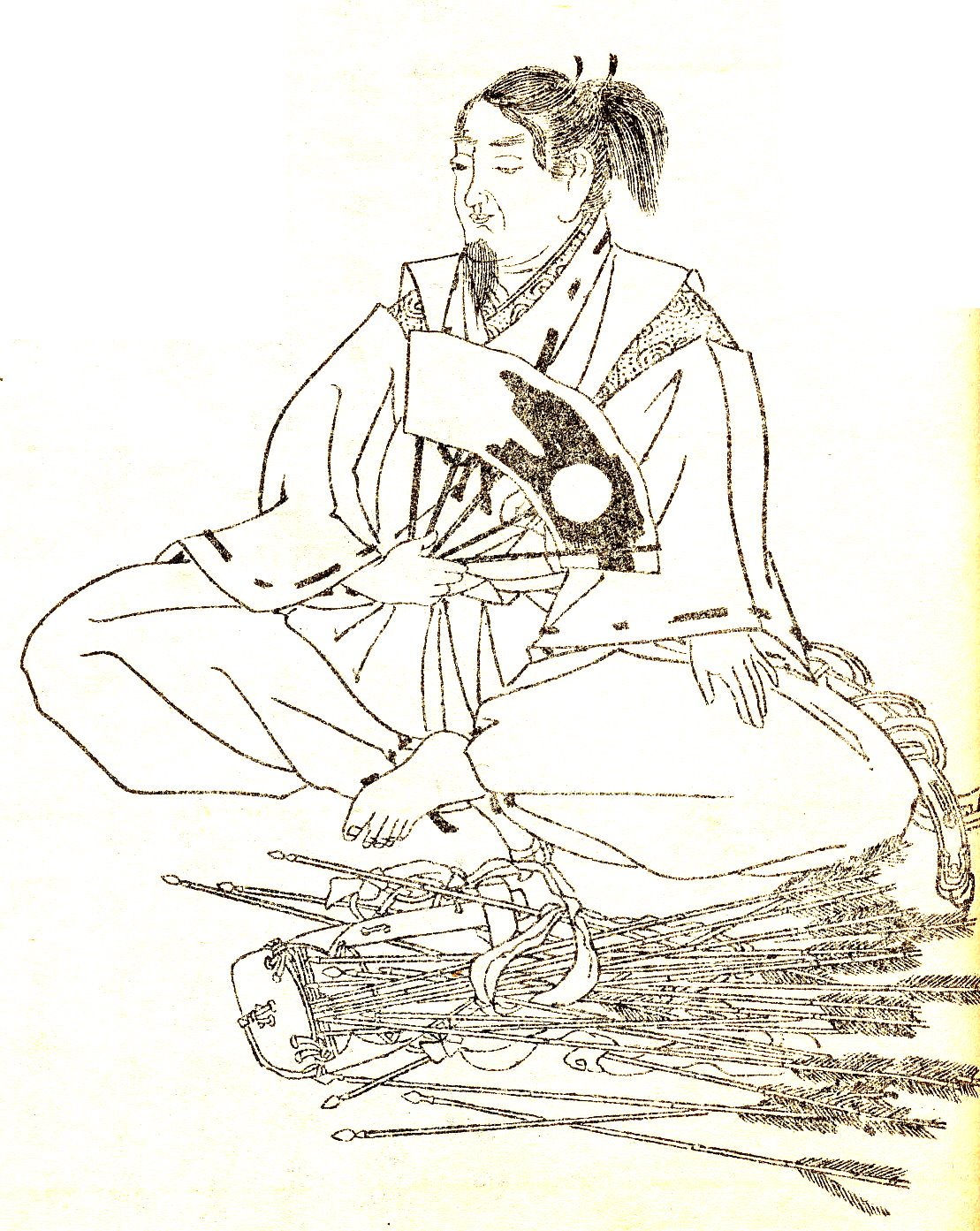 These were descendants of Emperor Kōkō. The great-grandson of his firstborn Prince Koretada, Kōshō, was the ancestor of a line of '' busshi'', from which various styles of Buddhist sculpture emerged. Kōshō's grandson Kakujo established the Shichijō Bussho workshop.
These were descendants of Emperor Kōkō. The great-grandson of his firstborn Prince Koretada, Kōshō, was the ancestor of a line of '' busshi'', from which various styles of Buddhist sculpture emerged. Kōshō's grandson Kakujo established the Shichijō Bussho workshop.
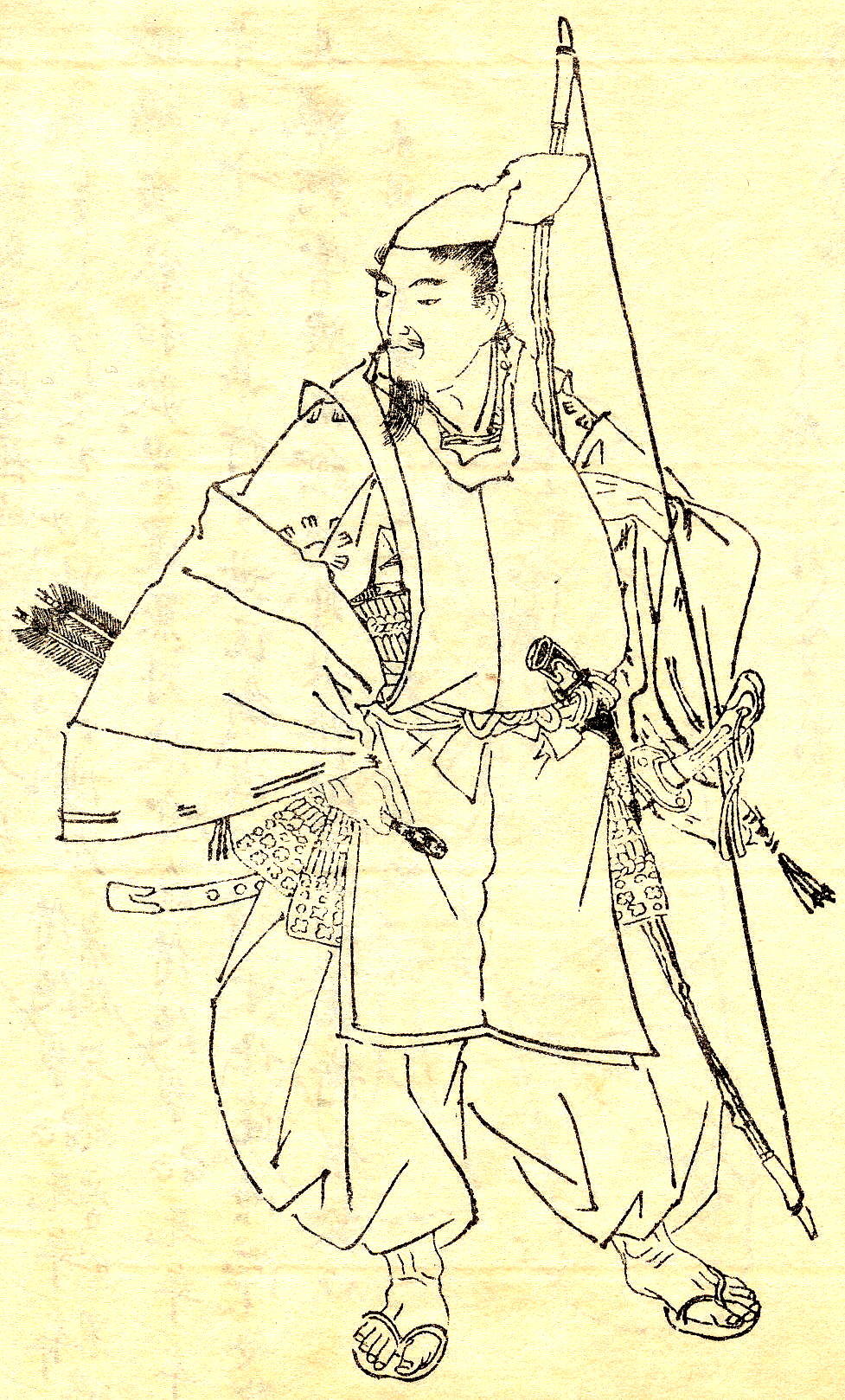


 *
*
 * - A group of Shinto shrines connected closedly with the members of Seiwa Genji branch of the Minamoto clan.
** Rokusonnō Shrine, Minami-ku, Kyoto,
* - A group of Shinto shrines connected closedly with the members of Seiwa Genji branch of the Minamoto clan.
** Rokusonnō Shrine, Minami-ku, Kyoto,
Heian Period: Minamoto Clan history
{{Webarchive, url=https://web.archive.org/web/20161113095823/http://samurai-archives.com/HeianPeriod.html , date=2016-11-13
Official site of Rokusonnō ShrineOfficial site of Tada ShrineOfficial site of Tsuboi HachimanguOfficial site of Sasaki Shrine
Heian period Japanese clans Imperial House of Japan Japanese names Nobility from Kyoto Royal families Japanese royalty Japanese noble families High society (social class) Lists of families
imperial family
A royal family is the immediate family of monarch, monarchs and sometimes their extended family.
The term imperial family appropriately describes the family of an emperor or emperor, empress, and the term papal family describes the family of ...
who were excluded from the line of succession and demoted into the ranks of the nobility since 814."...the Minamoto (1192-1333)". ''Warrior Rule in Japan'', page 11. Cambridge University Press. Several noble lines were bestowed the surname, the most notable of which was the Seiwa Genji, whose descendants established the Kamakura
, officially , is a city of Kanagawa Prefecture in Japan. It is located in the Kanto region on the island of Honshu. The city has an estimated population of 172,929 (1 September 2020) and a population density of 4,359 people per km2 over the tota ...
and Ashikaga shogunates following the Heian era. The Minamoto was one of the four great clans that dominated Japanese politics during the Heian
The Japanese word Heian (平安, lit. "peace") may refer to:
* Heian period, an era of Japanese history
* Heian-kyō, the Heian-period capital of Japan that has become the present-day city of Kyoto
* Heian series, a group of karate kata (forms)
* ...
period in Japanese history—the other three were the Fujiwara, the Taira, and the Tachibana.
In the late Heian period, Minamoto rivalry with the Taira culminated in the Genpei War
The was a national civil war between the Taira clan, Taira and Minamoto clan, Minamoto clans during the late Heian period of Japan. It resulted in the downfall of the Taira and the establishment of the Kamakura shogunate under Minamoto no Yori ...
(1180–1185 AD). The Minamoto emerged victorious and established Japan's first shogunate in Kamakura
, officially , is a city of Kanagawa Prefecture in Japan. It is located in the Kanto region on the island of Honshu. The city has an estimated population of 172,929 (1 September 2020) and a population density of 4,359 people per km2 over the tota ...
under Minamoto no Yoritomo
was the founder and the first shogun of the Kamakura shogunate, ruling from 1192 until 1199, also the first ruling shogun in the history of Japan.Nussbaum, Louis-Frédéric. (2005). "Minamoto no Yoriie" in . He was the husband of Hōjō Masako ...
, who appointed himself as ''shōgun
, officially , was the title of the military rulers of Japan during most of the period spanning from 1185 to 1868. Nominally appointed by the Emperor, shoguns were usually the de facto rulers of the country, except during parts of the Kamak ...
'' in 1192, ushering in the Kamakura period
The is a period of History of Japan, Japanese history that marks the governance by the Kamakura shogunate, officially established in 1192 in Kamakura, Kanagawa, Kamakura by the first ''shōgun'' Minamoto no Yoritomo after the conclusion of the G ...
(1192–1333 AD) of Japanese history. The name "Genpei" comes from alternate readings of the ''kanji
are logographic Chinese characters, adapted from Chinese family of scripts, Chinese script, used in the writing of Japanese language, Japanese. They were made a major part of the Japanese writing system during the time of Old Japanese and are ...
'' "Minamoto" (源 ''Gen'') and "Taira" (平 ''Hei'').
The Kamakura Shogunate was overthrown by Emperor Go-Daigo in the Kenmu Restoration of 1333. Three years later the Kenmu government would then itself be overthrown by the Ashikaga clan, descendants of the Seiwa Genji who established the Ashikaga shogunate (1333 to 1573).
The Minamoto clan is also called the , or less frequently, the , using the on'yomi readings of for "Minamoto", while means "clan
A clan is a group of people united by actual or perceived kinship
and descent. Even if lineage details are unknown, a clan may claim descent from a founding member or apical ancestor who serves as a symbol of the clan's unity. Many societie ...
", and is used as a suffix for "extended family
An extended family is a family that extends beyond the nuclear family of parents and their children to include aunts, uncles, grandparents, cousins or other relatives, all living nearby or in the same household. Particular forms include the stem ...
".
History
The Emperors of Japan bestowed noble surnames upon members of theimperial family
A royal family is the immediate family of monarch, monarchs and sometimes their extended family.
The term imperial family appropriately describes the family of an emperor or emperor, empress, and the term papal family describes the family of ...
who were excluded from the line of succession and demoted into the ranks of the nobility. In May 814, the first emperor
The word ''emperor'' (from , via ) can mean the male ruler of an empire. ''Empress'', the female equivalent, may indicate an emperor's wife (empress consort), mother/grandmother (empress dowager/grand empress dowager), or a woman who rules ...
to grant the surname "Minamoto" was Emperor Saga
was the 52nd emperor of Japan, Emperor Saga, Saganoyamanoe Imperial Mausoleum, Imperial Household Agency according to the traditional order of succession. Saga's reign lasted from 809 to 823.
Traditional narrative
Saga was the second son of ...
, to his seventh son— Minamoto no Makoto, in Heian-Kyō (modern Kyōto). The practice was most prevalent during the Heian period (794–1185 AD), although its last occurrence was during the Sengoku period
The was the period in History of Japan, Japanese history in which civil wars and social upheavals took place almost continuously in the 15th and 16th centuries. The Kyōtoku incident (1454), Ōnin War (1467), or (1493) are generally chosen as th ...
. The Taira were another such offshoot of the imperial dynasty
A dynasty is a sequence of rulers from the same family, usually in the context of a monarchy, monarchical system, but sometimes also appearing in republics. A dynasty may also be referred to as a "house", "family" or "clan", among others.
H ...
, making both clans distant relatives.  The most prominent of the several Minamoto families, the Seiwa Genji, descended from Minamoto no Tsunemoto (897–961), a grandson of Emperor Seiwa. Tsunemoto went to the provinces and became the founder of a major warrior dynasty. Minamoto no Mitsunaka (912–997) formed an alliance with the Fujiwara. Thereafter the Fujiwara frequently called upon the Minamoto to restore order in the capital, Heian-Kyō (modern Kyōto).Mitsunaka's eldest son, Minamoto no Yorimitsu (948–1021), became the protégé of Fujiwara no Michinaga; another son, Minamoto no Yorinobu (968–1048) suppressed the rebellion of Taira no Tadatsune in 1032. Yorinobu's son, Minamoto no Yoriyoshi (988–1075), and grandson, Minamoto no Yoshiie (1039–1106), pacified most of northeastern Japan between 1051 and 1087.
The most prominent of the several Minamoto families, the Seiwa Genji, descended from Minamoto no Tsunemoto (897–961), a grandson of Emperor Seiwa. Tsunemoto went to the provinces and became the founder of a major warrior dynasty. Minamoto no Mitsunaka (912–997) formed an alliance with the Fujiwara. Thereafter the Fujiwara frequently called upon the Minamoto to restore order in the capital, Heian-Kyō (modern Kyōto).Mitsunaka's eldest son, Minamoto no Yorimitsu (948–1021), became the protégé of Fujiwara no Michinaga; another son, Minamoto no Yorinobu (968–1048) suppressed the rebellion of Taira no Tadatsune in 1032. Yorinobu's son, Minamoto no Yoriyoshi (988–1075), and grandson, Minamoto no Yoshiie (1039–1106), pacified most of northeastern Japan between 1051 and 1087.
 The Seiwa Genji's fortunes declined in the Hōgen Rebellion (1156), when the Taira executed most of the line, including Minamoto no Tameyoshi. During the Heiji Disturbance (1160), the head of the Seiwa Genji, Minamoto no Yoshitomo, died in battle. Taira no Kiyomori seized power in Kyoto by forging an alliance with the retired emperors Go-Shirakawa and Toba and infiltrating the ''
The Seiwa Genji's fortunes declined in the Hōgen Rebellion (1156), when the Taira executed most of the line, including Minamoto no Tameyoshi. During the Heiji Disturbance (1160), the head of the Seiwa Genji, Minamoto no Yoshitomo, died in battle. Taira no Kiyomori seized power in Kyoto by forging an alliance with the retired emperors Go-Shirakawa and Toba and infiltrating the ''kuge
The was a Japanese Aristocracy (class), aristocratic Social class, class that dominated the Japanese Imperial Court in Kyoto. The ''kuge'' were important from the establishment of Kyoto as the capital during the Heian period in the late 8th ce ...
''. He sent Minamoto no Yoritomo
was the founder and the first shogun of the Kamakura shogunate, ruling from 1192 until 1199, also the first ruling shogun in the history of Japan.Nussbaum, Louis-Frédéric. (2005). "Minamoto no Yoriie" in . He was the husband of Hōjō Masako ...
(1147–1199), the third son of Minamoto no Yoshimoto of the Seiwa Genji, into exile. In 1180, during the Genpei War
The was a national civil war between the Taira clan, Taira and Minamoto clan, Minamoto clans during the late Heian period of Japan. It resulted in the downfall of the Taira and the establishment of the Kamakura shogunate under Minamoto no Yori ...
, Yoritomo mounted a full-scale rebellion against the Taira rule, culminating in the destruction of the Taira and the subjugation of eastern Japan within five years. In 1192, he received the title ''shōgun
, officially , was the title of the military rulers of Japan during most of the period spanning from 1185 to 1868. Nominally appointed by the Emperor, shoguns were usually the de facto rulers of the country, except during parts of the Kamak ...
'' and set up the first ''bakufu
, officially , was the title of the military rulers of Japan during most of the period spanning from 1185 to 1868. Nominally appointed by the Emperor, shoguns were usually the de facto rulers of the country, except during parts of the Kamak ...
'' in the history of Japan at Kamakura
, officially , is a city of Kanagawa Prefecture in Japan. It is located in the Kanto region on the island of Honshu. The city has an estimated population of 172,929 (1 September 2020) and a population density of 4,359 people per km2 over the tota ...
— Kamakura shogunate.
 The later Ashikaga (founders of the Ashikaga shogunate of
The later Ashikaga (founders of the Ashikaga shogunate of Muromachi period
The , also known as the , is a division of Japanese history running from approximately 1336 to 1573. The period marks the governance of the Muromachi or Ashikaga shogunate ( or ), which was officially established in 1338 by the first Muromachi ...
), Nitta, Takeda, and Tokugawa (founders of the Tokugawa shogunate
The Tokugawa shogunate, also known as the was the military government of Japan during the Edo period from 1603 to 1868.
The Tokugawa shogunate was established by Tokugawa Ieyasu after victory at the Battle of Sekigahara, ending the civil wars ...
of Edo period
The , also known as the , is the period between 1600 or 1603 and 1868 in the history of Japan, when the country was under the rule of the Tokugawa shogunate and some 300 regional ''daimyo'', or feudal lords. Emerging from the chaos of the Sengok ...
) clans claim descents from the Minamoto clan (Seiwa Genji branch). The
The protagonist
A protagonist () is the main character of a story. The protagonist makes key decisions that affect the plot, primarily influencing the story and propelling it forward, and is often the character who faces the most significant obstacles. If a ...
of the classical Japanese novel '' The Tale of Genji (The Tale of Minamoto clan)—'' Hikaru Genji, was bestowed the name Minamoto for political reasons by his father the emperor and was delegated to civilian life and a career as an imperial officer.
The Genpei War
The was a national civil war between the Taira clan, Taira and Minamoto clan, Minamoto clans during the late Heian period of Japan. It resulted in the downfall of the Taira and the establishment of the Kamakura shogunate under Minamoto no Yori ...
is also the subject of the early Japanese epic '' The Tale of the Heike'' (''Heike Monogatari'').Members of the Minamoto clan (Genji clan)
Even within royalty there was a distinction between princes with the title , who could ascend to the throne, and princes with the title , who were not members of the line of imperial succession but nevertheless remained members of the royal class (and therefore outranked members of Minamoto clans). The bestowing of the Minamoto name on a (theretofore-)prince or his descendants excluded them from the royal class altogether, thereby operating as a reduction in legal and social rank even for ''ō''-princes not previously in the line of succession. Many later clans were formed by members of the Minamoto clan, and in many early cases, progenitors of these clans are known by either family name. There are also known monks of Minamoto descent; these are often noted in genealogies but did not carry the clan name (in favour of adharma name
A Dharma name is a new name acquired during both lay and monastic Buddhist initiation rituals in Mahayana Buddhism and Pabbajjā, monastic ordination in Theravada Buddhism (where it is more proper to call it Dhamma or Sangha name). The name is ...
).
The Minamoto is the ancestor and parent clan of many notable descendant clans, some of which are Ashikaga, Tokugawa, Matsudaira, Nitta, Takeda, Shimazu, Sasaki, Akamatsu, Kitabatake, Tada, Ota, Toki, Yamana, Satomi, Hosokawa, Satake, Yamamoto, Hemi, Ogasawara, Yasuda, Takenouchi, Hiraga, Imagawa, Miyake, etc.
There were 21 branches of the clan, each named after the emperor from whom it descended. Some of these lineages were populous, but a few did not produce descendants.
Saga Genji
The Saga Genji are descendants ofEmperor Saga
was the 52nd emperor of Japan, Emperor Saga, Saganoyamanoe Imperial Mausoleum, Imperial Household Agency according to the traditional order of succession. Saga's reign lasted from 809 to 823.
Traditional narrative
Saga was the second son of ...
. As Saga had many children, many were bestowed the '' uji'' Minamoto, declassing them from imperial succession. Among his sons, Makoto, Tokiwa, and Tōru took the position of Minister of the Left ('' sadaijin''); they were among the most powerful in the Imperial Court in the early Heian period
The is the last division of classical Japanese history, running from 794 to 1185. It followed the Nara period, beginning when the 50th emperor, Emperor Kammu, moved the capital of Japan to Heian-kyō (modern Kyoto). means in Japanese. It is a ...
. Some of Tōru's descendants in particular settled the provinces and formed '' buke''. Clans such as the Watanabe, Matsuura, and Kamachi descend from the Saga Genji. Noted Saga Genji and descendants include:
* Minamoto no Makoto, seventh son of the Emperor
* Minamoto no Hiromu, eighth son of the Emperor
** Minamoto no Hitoshi, grandson of Hiromu
* Minamoto no Tokiwa, son of the Emperor
** Minamoto no Okoru, first son of Tokiwa
* Minamoto no Sadamu, son of the Emperor
** Minamoto no Shitagō, great-grandson of Sadamu
* Minamoto no Hiroshi, son of the Emperor
* Minamoto no Tōru, son of the Emperor
Noted Saga Genji and descendants include:
* Minamoto no Makoto, seventh son of the Emperor
* Minamoto no Hiromu, eighth son of the Emperor
** Minamoto no Hitoshi, grandson of Hiromu
* Minamoto no Tokiwa, son of the Emperor
** Minamoto no Okoru, first son of Tokiwa
* Minamoto no Sadamu, son of the Emperor
** Minamoto no Shitagō, great-grandson of Sadamu
* Minamoto no Hiroshi, son of the Emperor
* Minamoto no Tōru, son of the Emperor ** Minamoto no Anbō (secular name Minamoto no Shitagō), great-grandson of Tōru
** Watanabe no Tsuna (his official name was Minamoto no Tsuna, who resided at Watanabe in Settsu province, and took the name of the place), great-great-grandson of Tōru
*** Matsuura Hisashi, great-grandson of Tsuna
** Minamoto no Koreshige, grandson of Tōru
*** Minamoto no Mitsusue, great-great-grandson of Koreshige
* Minamoto no Tsutomu, son of the Emperor
* Minamoto no Hiraku, son of the Emperor
History records indicate that at least three of Emperor Saga's daughters were also made Minamoto ( Minamoto no Kiyohime, Minamoto no Sadahime, and Minamoto no Yoshihime), but few records concerning his daughters are known.
** Minamoto no Anbō (secular name Minamoto no Shitagō), great-grandson of Tōru
** Watanabe no Tsuna (his official name was Minamoto no Tsuna, who resided at Watanabe in Settsu province, and took the name of the place), great-great-grandson of Tōru
*** Matsuura Hisashi, great-grandson of Tsuna
** Minamoto no Koreshige, grandson of Tōru
*** Minamoto no Mitsusue, great-great-grandson of Koreshige
* Minamoto no Tsutomu, son of the Emperor
* Minamoto no Hiraku, son of the Emperor
History records indicate that at least three of Emperor Saga's daughters were also made Minamoto ( Minamoto no Kiyohime, Minamoto no Sadahime, and Minamoto no Yoshihime), but few records concerning his daughters are known.
Ninmyō Genji
They were descendants of Emperor Ninmyō. His sons Minamoto no Masaru and Minamoto no Hikaru were udaijin. Among Hikaru's descendants was Minamoto no Atsushi, adoptive father of the Saga Genji's Watanabe no Tsuna and father of the Seiwa Genji's Minamoto no Mitsunaka's wife.Montoku Genji
These were descendants of Emperor Montoku. Among them, Minamoto no Yoshiari was a sadaijin, and among his descendants were the Sakado clan who were Hokumen no Bushi.Seiwa Genji
These were descendants of Emperor Seiwa. The most numerous of them were those descended from Minamoto no Tsunemoto, son of Prince Sadazumi. Hachimantarō Yoshiie of the Kawachi Genji was a leader of a '' buke''. His descendants set up the Kamakura shogunate, making his a prestigious pedigree claimed by many ''buke'', particularly for the direct descendants in the Ashikaga clan (that set up the Ashikaga shogunate) and the rivalNitta clan
The was one of several major families descended from the Seiwa Genji, and numbered among the chief enemies of the Hōjō clan regents, and later the Ashikaga shogunate. The common ancestor of the Nitta, Minamoto no Yoshishige (1135–1202), wa ...
. Centuries later, Tokugawa Ieyasu
Tokugawa Ieyasu (born Matsudaira Takechiyo; 31 January 1543 – 1 June 1616) was the founder and first ''shōgun'' of the Tokugawa shogunate of Japan, which ruled from 1603 until the Meiji Restoration in 1868. He was the third of the three "Gr ...
would claim descent from the Seiwa Genji by way of the Nitta clan.

Yōzei Genji
These were descendants of Emperor Yōzei. While Minamoto no Tsunemoto is termed the ancestor of the Seiwa Genji, there is evidence (rediscovered in the late 19th century by Hoshino Hisashi) suggesting that he was actually the grandson of Emperor Yōzei rather than of Emperor Seiwa. This theory is not widely accepted as fact, but as Yōzei was deposed for reprehensible behaviour, there would have been a compelling motive to claim descent from more auspicious origins if it were the case.Kōkō Genji
 These were descendants of Emperor Kōkō. The great-grandson of his firstborn Prince Koretada, Kōshō, was the ancestor of a line of '' busshi'', from which various styles of Buddhist sculpture emerged. Kōshō's grandson Kakujo established the Shichijō Bussho workshop.
These were descendants of Emperor Kōkō. The great-grandson of his firstborn Prince Koretada, Kōshō, was the ancestor of a line of '' busshi'', from which various styles of Buddhist sculpture emerged. Kōshō's grandson Kakujo established the Shichijō Bussho workshop.
Uda Genji
These were descendants of Emperor Uda. Two sons of Prince Atsumi, Minamoto no Masanobu and Minamoto no Shigenobu became '' sadaijin''. Masanobu's children in particular flourished, forming five ''dōjō'' houses as ''kuge
The was a Japanese Aristocracy (class), aristocratic Social class, class that dominated the Japanese Imperial Court in Kyoto. The ''kuge'' were important from the establishment of Kyoto as the capital during the Heian period in the late 8th ce ...
'', and as '' buke'' the Sasaki clan of the Ōmi Genji, and the Izumo Genji.

Daigo Genji
These were descendants of Emperor Daigo. His son Minamoto no Takaakira became a '' sadaijin'', but his downfall came during the Anna incident. Takaakira's descendants include the Okamoto and Kawajiri clans. Daigo's grandson Minamoto no Hiromasa was a reputed musician.Murakami Genji
These were descendants ofEmperor Murakami
The word ''emperor'' (from , via ) can mean the male ruler of an empire. ''Empress'', the female equivalent, may indicate an emperor's wife ( empress consort), mother/grandmother ( empress dowager/ grand empress dowager), or a woman who rul ...
. His grandson Morofusa was an '' udaijin'' and had many descendants, among them several houses of ''dōjō kuge
The was a Japanese Aristocracy (class), aristocratic Social class, class that dominated the Japanese Imperial Court in Kyoto. The ''kuge'' were important from the establishment of Kyoto as the capital during the Heian period in the late 8th ce ...
''. Until the Ashikaga clan took it during the Muromachi period
The , also known as the , is a division of Japanese history running from approximately 1336 to 1573. The period marks the governance of the Muromachi or Ashikaga shogunate ( or ), which was officially established in 1338 by the first Muromachi ...
, the title of '' Genji no Chōja'' always fell to one of Morofusa's progeny.
Reizei Genji
These were descendants of Emperor Reizei. Though they are included among the listing of 21 Genji lineages, no concrete record of the names of his descendants made Minamoto is known to survive.Kazan Genji
These were descendants of Emperor Kazan. They became the '' dōjō'' Shirakawa family, which headed the Jingi-kan for centuries, responsible for the centralised aspects ofShinto
, also called Shintoism, is a religion originating in Japan. Classified as an East Asian religions, East Asian religion by Religious studies, scholars of religion, it is often regarded by its practitioners as Japan's indigenous religion and as ...
.

Sanjō Genji
These were descendants of Emperor Sanjō's son Prince Atsuakira. Starting with one of them, Minamoto no Michisue, the position of ''Ōkimi-no-kami'' (chief genealogist of the imperial family) in the Ministry of the Imperial Household was passed down hereditarily.Go-Sanjō Genji
These were descendants of Emperor Go-Sanjō's son Prince Sukehito. Sukehito's son Minamoto no Arihito was a '' sadaijin''.Minamoto no Yoritomo
was the founder and the first shogun of the Kamakura shogunate, ruling from 1192 until 1199, also the first ruling shogun in the history of Japan.Nussbaum, Louis-Frédéric. (2005). "Minamoto no Yoriie" in . He was the husband of Hōjō Masako ...
's vassal Tashiro Nobutsuna, who appears in the '' Tale of the Heike'', was allegedly Arihito's grandson (according to the '' Genpei Jōsuiki'').
Go-Shirakawa Genji
This line consisted solely of Emperor Go-Shirakawa son Mochihito-ō (Takakura-no-Miya). As part of the succession dispute that led to the opening hostilities of theGenpei War
The was a national civil war between the Taira clan, Taira and Minamoto clan, Minamoto clans during the late Heian period of Japan. It resulted in the downfall of the Taira and the establishment of the Kamakura shogunate under Minamoto no Yori ...
, he was declassed (renamed " Minamoto no Mochimitsu") and exiled.
Juntoku Genji
These were descendants of Emperor Juntoku's sons Tadanari-ō and Prince Yoshimune. The latter's grandson Yoshinari rose to '' sadaijin'' with the help of Ashikaga Yoshimitsu.
Go-Saga Genji
This line consisted solely of Emperor Go-Saga's grandson Prince Koreyasu. Koreyasu-ō was installed as a puppet ''shōgun
, officially , was the title of the military rulers of Japan during most of the period spanning from 1185 to 1868. Nominally appointed by the Emperor, shoguns were usually the de facto rulers of the country, except during parts of the Kamak ...
'' (the seventh of the Kamakura shogunate) at a young age, and was renamed " Minamoto no Koreyasu" a few years later. After he was deposed, he regained royal status, and became a monk soon after, thereby losing the Minamoto name.
Go-Fusakusa Genji
These were descendants of Emperor Go-Fukakusa's son Prince Hisaaki (the eighth ''shōgun
, officially , was the title of the military rulers of Japan during most of the period spanning from 1185 to 1868. Nominally appointed by the Emperor, shoguns were usually the de facto rulers of the country, except during parts of the Kamak ...
'' of the Kamakura shogunate). Hisaaki's sons Prince Morikuni (the next ''shōgun'') and Prince Hisayoshi were made Minamoto. Hisayoshi's adopted "nephew" (actually Nijō Michihira's son) Muneaki became a ''gon-dainagon'' (acting ''dainagon
was a counselor of the first rank in the Imperial court of Japan. The role dates from the 7th century.
This advisory position remained a part of the Imperial court from the 8th century until the Meiji period in the 19th century.Nussbaum, "Dainag ...
'').
Ōgimachi Genji
These were non-royal descendants of Emperor Ōgimachi. At first they were '' buke'', but they later became '' dōjō-ke'', the Hirohata family.Legacy
Historical periods and cities founding
 *
* Kamakura period
The is a period of History of Japan, Japanese history that marks the governance by the Kamakura shogunate, officially established in 1192 in Kamakura, Kanagawa, Kamakura by the first ''shōgun'' Minamoto no Yoritomo after the conclusion of the G ...
and Kamakura city, which were established and founded by Minamoto no Yoritomo
was the founder and the first shogun of the Kamakura shogunate, ruling from 1192 until 1199, also the first ruling shogun in the history of Japan.Nussbaum, Louis-Frédéric. (2005). "Minamoto no Yoriie" in . He was the husband of Hōjō Masako ...
''—''the first ''shōgun
, officially , was the title of the military rulers of Japan during most of the period spanning from 1185 to 1868. Nominally appointed by the Emperor, shoguns were usually the de facto rulers of the country, except during parts of the Kamak ...
'' of Japan.
* Muromachi period
The , also known as the , is a division of Japanese history running from approximately 1336 to 1573. The period marks the governance of the Muromachi or Ashikaga shogunate ( or ), which was officially established in 1338 by the first Muromachi ...
was founded by ''shōgun
, officially , was the title of the military rulers of Japan during most of the period spanning from 1185 to 1868. Nominally appointed by the Emperor, shoguns were usually the de facto rulers of the country, except during parts of the Kamak ...
'' Ashikaga Takauji
also known as Minamoto no Takauji was the founder and first ''shōgun'' of the Ashikaga shogunate."Ashikaga Takauji" in ''Encyclopædia Britannica, The New Encyclopædia Britannica''. Chicago: Encyclopædia Britannica Inc., 15th edn., 1992, Vol. ...
''—''a direct descendant of Minamoto no Yoshiyasu (also known as ''Ashikaga Yoshiyasu'').
* Edo period
The , also known as the , is the period between 1600 or 1603 and 1868 in the history of Japan, when the country was under the rule of the Tokugawa shogunate and some 300 regional ''daimyo'', or feudal lords. Emerging from the chaos of the Sengok ...
was founded by ''shōgun
, officially , was the title of the military rulers of Japan during most of the period spanning from 1185 to 1868. Nominally appointed by the Emperor, shoguns were usually the de facto rulers of the country, except during parts of the Kamak ...
'' Tokugawa Ieyasu
Tokugawa Ieyasu (born Matsudaira Takechiyo; 31 January 1543 – 1 June 1616) was the founder and first ''shōgun'' of the Tokugawa shogunate of Japan, which ruled from 1603 until the Meiji Restoration in 1868. He was the third of the three "Gr ...
''—''who claimed to be a descendant of Minamoto no Yoshishige (also known as ''Nitta Yoshishige'').
Shinto shrines founding
Kyoto Prefecture
is a Prefectures of Japan, prefecture of Japan located in the Kansai region of Honshu. Kyoto Prefecture has a population of 2,561,358 () and has a geographic area of . Kyoto Prefecture borders Fukui Prefecture to the northeast, Shiga Prefecture ...
** Tada Jinja, Kawanishi, Hyōgo Prefecture
is a Prefectures of Japan, prefecture of Japan located in the Kansai region of Honshu. Hyōgo Prefecture has a population of 5,469,762 () and a geographic area of . Hyōgo Prefecture borders Kyoto Prefecture to the east, Osaka Prefecture to th ...
** Tsuboi Hachimangū, Habikino, Osaka Prefecture
is a prefecture of Japan located in the Kansai region of Honshu. Osaka Prefecture has a population of 8,778,035 () and has a geographic area of . Osaka Prefecture borders Hyōgo Prefecture to the northwest, Kyoto Prefecture to the north, Nara ...
* Sasaki Shrine - a Shinto shrine connected closely with the members of Uda Genji branch of the Minamoto clan.
Literature and arts
* byMurasaki Shikibu
was a Japanese novelist, Japanese poetry#Age of Nyobo or court ladies, poet and lady-in-waiting at the Imperial Court in Kyoto, Imperial court in the Heian period. She was best known as the author of ''The Tale of Genji'', widely considered t ...
, an important 11th-century classical Japanese novel.
* '','' a 14th-century epic poetry
In poetry, an epic is a lengthy narrative poem typically about the extraordinary deeds of extraordinary characters who, in dealings with gods or other superhuman forces, gave shape to the mortal universe for their descendants. With regard t ...
compiled of the struggle between the Minamoto clan and the Taira clan
The was one of the four most important Japanese clans, clans that dominated Japanese politics during the Heian period, Heian period of History of Japan, Japanese history – the others being the Minamoto clan, Minamoto, the Fujiwara clan, Fuji ...
for control of Japan at the end of the 12th century in the Genpei War
The was a national civil war between the Taira clan, Taira and Minamoto clan, Minamoto clans during the late Heian period of Japan. It resulted in the downfall of the Taira and the establishment of the Kamakura shogunate under Minamoto no Yori ...
(1180–1185).
See also
*History of Japan
The first human inhabitants of the Japanese archipelago have been traced to the Japanese Paleolithic, Paleolithic, around 38–39,000 years ago. The Jōmon period, named after its cord-marked pottery, was followed by the Yayoi period in the fi ...
* Japanese clans
* Minamoto (surname)
* Minamoto Yoritomo
References
External links
Heian Period: Minamoto Clan history
{{Webarchive, url=https://web.archive.org/web/20161113095823/http://samurai-archives.com/HeianPeriod.html , date=2016-11-13
Official site of Rokusonnō Shrine
Heian period Japanese clans Imperial House of Japan Japanese names Nobility from Kyoto Royal families Japanese royalty Japanese noble families High society (social class) Lists of families